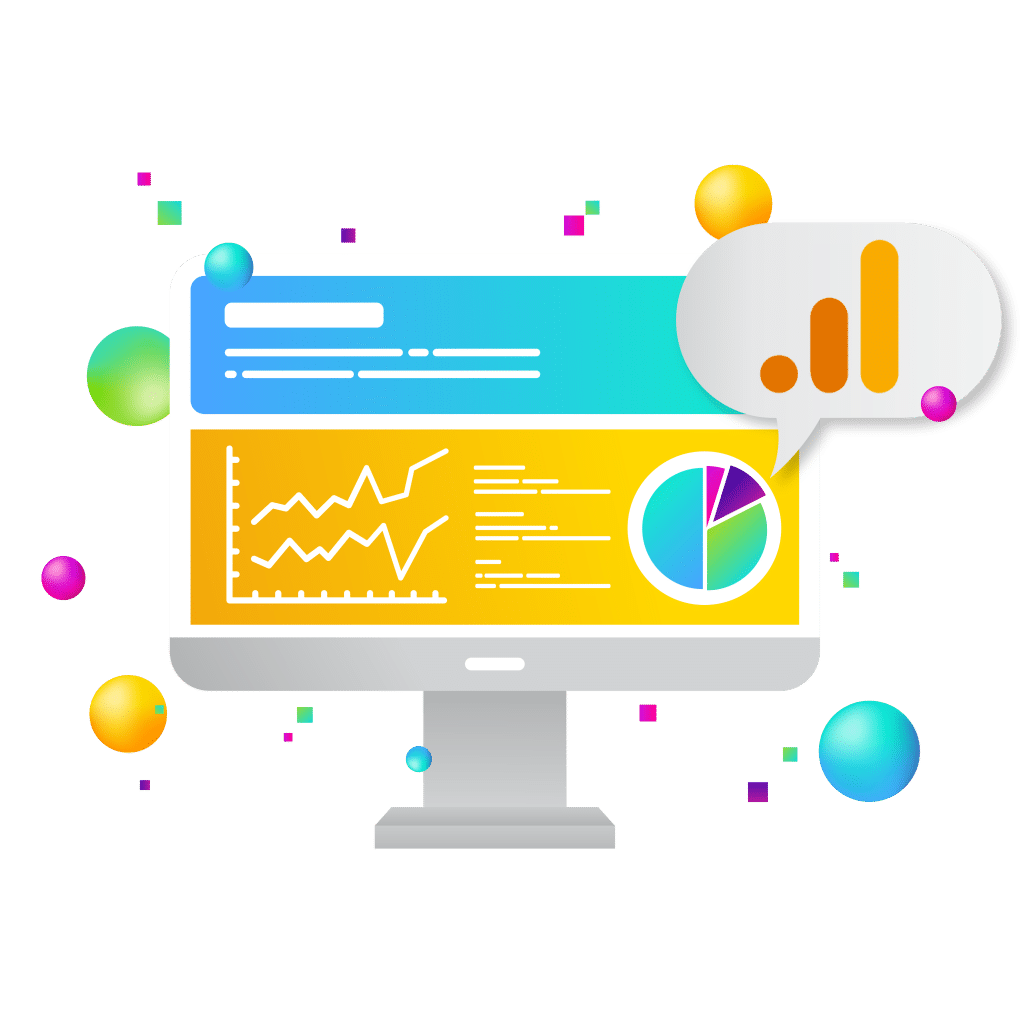
The digital marketing landscape is more competitive than ever, requiring businesses to be agile, data-driven, and customer-focused to stay ahead. The old adage of “half the money I spend on advertising is wasted; the trouble is I don’t know which half” no longer holds true in the age of data analytics. Today, marketers can pinpoint exactly where their strategies succeed and where they fail, thanks to the wealth of data available from every touchpoint in the customer journey. This article explores the crucial role of data analytics in digital marketing and offers practical insights on how to leverage this data to optimize marketing strategies effectively.
Understanding Data Analytics
Data analytics is the backbone of any successful digital marketing strategy. It involves the systematic analysis of data to draw meaningful insights that can drive decision-making. However, the power of data analytics goes beyond mere number-crunching—it’s about storytelling through data, identifying patterns that inform future actions, and continually refining strategies based on real-time feedback.
Types of Data in Digital Marketing
- Customer Data: This includes demographics (age, gender, income), psychographics (interests, values, lifestyle), and behavior data (purchase history, browsing patterns). Understanding these data points allows for the creation of detailed buyer personas, which are essential for targeted marketing.
- Website Analytics: Data from website interactions provides insights into the customer journey, from the initial visit to the final conversion. Metrics such as heatmaps, click-through paths, and funnel analysis can reveal the effectiveness of website design and content, helping marketers optimize user experience.
- Social Media Metrics: Social media is not just a platform for engagement; it’s a treasure trove of data. Social listening tools can track brand sentiment, competitor performance, and emerging trends, giving marketers the information needed to pivot strategies rapidly.
- Email Marketing Data: Beyond open and click-through rates, modern email marketing analytics can track recipient behavior across campaigns, identify the best times to send emails, and even predict which content will resonate most with different segments.
Key Metrics in Digital Marketing
Understanding and effectively tracking key metrics is essential to ensuring that your marketing strategies are hitting the mark. These metrics provide a clear picture of performance and highlight areas where improvements can be made.
Website Traffic and User Behavior
Website traffic metrics give an overall view of how your site is performing. Beyond surface-level data, deeper insights like user flow, exit pages, and site speed metrics can reveal potential friction points in the user journey. For instance, a high bounce rate on a key landing page could indicate issues with content relevance, page load time, or mobile optimization. Understanding these behaviors allows for targeted adjustments that enhance user experience and improve conversion rates.
Conversion Rates and Sales Data
Conversion rate optimization (CRO) is a key focus in digital marketing. By analyzing the entire funnel—from awareness to conversion—marketers can identify drop-off points and areas where potential customers are getting stuck. Sales data, when paired with user behavior data, can provide even deeper insights. For example, linking purchase behavior with traffic sources allows marketers to allocate budgets more effectively to channels that drive high-value conversions.
Social Media Engagement
Engagement on social media is more than just a vanity metric; it’s an indicator of brand health and customer sentiment. Deeper analysis can reveal patterns in engagement, such as which types of posts generate the most interaction or at what times your audience is most active. This data can then inform content creation and scheduling, ensuring that social media efforts are aligned with audience preferences and behaviors.
Email Marketing Metrics
In addition to tracking open and click-through rates, sophisticated email analytics can measure how different segments of your audience respond to different content types. This can lead to more personalized email marketing strategies, with dynamic content that changes based on user behavior. Advanced metrics like heatmaps within emails can also show which parts of your emails are capturing the most attention, allowing for further optimization.
Using Data Analytics to Optimize Marketing Strategies
The real power of data analytics lies in its ability to transform raw data into actionable insights that drive strategic decision-making. Here’s how you can leverage these insights to optimize your marketing strategies:
Segmentation and Targeting
Data-driven segmentation goes beyond basic demographic segmentation. It includes behavioral, psychographic, and technographic data, which allows for hyper-targeted marketing campaigns. For example, Netflix’s recommendation engine uses detailed viewing data to segment users and suggest content that matches their preferences, keeping engagement levels high. Marketers can apply similar techniques to segment their audience into highly specific groups, each receiving tailored content that speaks directly to their needs and interests.
A/B Testing and Optimization
A/B testing is a powerful tool for optimizing marketing efforts. However, it’s not just about testing one headline against another. Advanced A/B testing involves multivariate testing, where multiple variables are tested simultaneously to identify the optimal combination of elements. For example, an online retailer might test different combinations of product images, descriptions, prices, and calls-to-action to determine the most effective product page design. Continuous testing and data analysis ensure that your campaigns evolve and improve over time, adapting to changing consumer behaviors and preferences.
Personalization and Customer Experience
Personalization in marketing has evolved from simply addressing a customer by name to creating a fully personalized journey based on data. Predictive analytics can anticipate what a customer might want next, leading to proactive marketing efforts. For instance, Amazon’s recommendation engine suggests products based on browsing and purchasing history, enhancing the shopping experience and increasing the likelihood of additional purchases. Marketers should aim to create similar personalized experiences across all touchpoints, from website content to email communications, to drive engagement and loyalty.
Predictive Analytics
Predictive analytics goes beyond understanding current trends to forecast future behaviors. By analyzing past data, such as previous campaign performance and customer purchase history, marketers can predict which strategies are likely to succeed in the future. This can be particularly useful in planning product launches, seasonal campaigns, and inventory management. For example, predictive analytics can help a retailer forecast which products will be in demand during the holiday season, allowing them to adjust their inventory and marketing campaigns accordingly.
Tools and Technologies for Data Analytics in Digital Marketing
Leveraging the right tools and technologies is essential to effectively analyze data and optimize your digital marketing strategies.
Google Analytics
Google Analytics is a foundational tool for digital marketers, offering insights into website performance, traffic sources, and user behavior. However, its capabilities extend far beyond basic metrics. Features like advanced segments, custom reports, and multi-channel funnel reports allow marketers to dive deep into data and uncover insights that can inform strategic decisions. Additionally, Google Analytics 4 (GA4) offers predictive metrics and enhanced event tracking, making it easier to understand user behavior across multiple platforms and devices.
Social Media Analytics Tools
Social media platforms offer built-in analytics tools, but third-party tools like Hootsuite, Buffer, and Sprout Social provide more comprehensive data. These tools allow marketers to track engagement across multiple platforms, compare performance against competitors, and schedule content for optimal impact. Advanced social media analytics tools also offer sentiment analysis, helping marketers understand how their brand is perceived and identify potential crises before they escalate.
CRM Systems
Customer Relationship Management (CRM) systems, such as Salesforce or HubSpot, are crucial for managing customer interactions and tracking the customer journey. These systems integrate with other marketing tools, allowing for seamless data collection and analysis across multiple touchpoints. CRM data can be used to segment audiences, personalize communications, and measure the effectiveness of marketing campaigns. Additionally, CRM systems often include lead scoring features, helping sales teams prioritize leads based on their likelihood to convert.
Marketing Automation Platforms
Marketing automation platforms, like Marketo, HubSpot, and Pardot, streamline marketing efforts by automating repetitive tasks such as email campaigns, social media posting, and lead nurturing. These platforms also integrate data analytics features, allowing marketers to track campaign performance in real-time and make data-driven adjustments. For example, an automated email campaign might use real-time data to adjust the frequency and content of emails based on recipient behavior, ensuring that the right message reaches the right audience at the right time.
Case Studies
Learning from real-world examples of successful and unsuccessful data-driven campaigns can provide valuable insights into the dos and don’ts of data analytics in digital marketing.
Successful Campaigns Powered by Data Analytics
One of the most well-known examples of a successful data-driven campaign is Coca-Cola’s “Share a Coke” campaign. By analyzing data on popular names among different demographics, Coca-Cola was able to personalize its product on a massive scale, leading to increased sales and social media buzz. The campaign’s success was further amplified by encouraging customers to share photos of their personalized Coke bottles on social media, creating a viral marketing effect.
Another example is Spotify’s Wrapped campaign, which uses data analytics to create personalized year-in-review summaries for users. This campaign not only engages users by highlighting their listening habits but also encourages them to share their Wrapped summaries on social media, driving both engagement and brand visibility.
Lessons Learned from Data-Driven Marketing Failures
While data-driven marketing can lead to success, it can also lead to missteps if not executed carefully. For example, Target’s infamous data-driven marketing failure involved predicting a teenage girl’s pregnancy based on her purchase history. The company sent maternity-related coupons to her home, revealing her pregnancy to her family before she had a chance to do so herself. This incident highlights the importance of considering the ethical implications of using data and ensuring that data-driven marketing efforts are sensitive to customer privacy.
Another example is Microsoft’s AI chatbot, Tay, which was designed to learn and interact with users on Twitter. Unfortunately, the chatbot quickly began to mimic and amplify inappropriate and offensive language from users, leading to its swift shutdown. This case underscores the importance of closely monitoring data-driven tools, especially those that rely on machine learning, to prevent unintended consequences.
Challenges and Ethical Considerations
While data analytics offers significant benefits for digital marketing, it also presents challenges and ethical considerations that must be addressed.
Data Privacy and Security
As businesses collect more data, concerns about data privacy and security have grown. Marketers must ensure that they comply with data protection regulations, such as the General Data Protection Regulation (GDPR) in Europe and the California Consumer Privacy Act (CCPA) in the United States. These regulations require businesses to obtain explicit consent from users before collecting their data and to provide clear information on how the data will be used. Additionally, businesses must implement robust security measures to protect customer data from breaches and unauthorized access.
Avoiding Data Overload
With the vast amount of data available, marketers risk becoming overwhelmed by information, leading to analysis paralysis. To avoid this, it’s important to focus on the most relevant data that aligns with your business goals. Using data visualization tools and dashboards can help simplify complex data sets and highlight key insights. Additionally, working with data scientists or analysts can help ensure that data is interpreted correctly and used to drive meaningful action.
Ethical Use of Data
The ethical use of data is becoming increasingly important as consumers become more aware of how their data is being used. Marketers must strike a balance between leveraging data for personalization and respecting customer privacy. This includes being transparent about data collection practices, giving customers control over their data, and avoiding manipulative or invasive marketing tactics. Ethical marketing not only builds trust with customers but also reduces the risk of legal and reputational damage.
Future Trends in Data-Driven Digital Marketing
The future of digital marketing is increasingly data-driven, with emerging technologies and trends set to further transform the industry.
AI and Machine Learning
Artificial Intelligence (AI) and machine learning are already making a significant impact on digital marketing, and their influence is only set to grow. AI-powered tools can analyze vast amounts of data quickly, identify patterns, and make real-time decisions. For example, AI can be used to personalize content recommendations, optimize ad targeting, and even create content. Machine learning algorithms can also predict customer behavior, allowing marketers to anticipate needs and deliver personalized experiences at scale.
Real-Time Analytics
The ability to analyze data in real-time is becoming essential as the digital landscape becomes more dynamic. Real-time analytics allows marketers to monitor campaign performance as it happens and make immediate adjustments to optimize results. For example, if a social media ad is underperforming, real-time data can help marketers quickly tweak the content or targeting to improve engagement. This agility is crucial in a fast-paced digital environment where consumer preferences and trends can change rapidly.
Integration of Cross-Channel Data
As consumers interact with brands across multiple channels—such as social media, email, search engines, and websites—it’s important for marketers to integrate data from these different sources. Cross-channel data integration provides a more holistic view of customer behavior and allows for more cohesive marketing strategies. For example, a retailer could use data from social media interactions, email engagement, and website behavior to create a unified customer profile, enabling more personalized and effective marketing efforts.
Privacy-First Marketing
As data privacy regulations become more stringent and consumers become more concerned about their data, privacy-first marketing is emerging as a key trend. This involves adopting transparent data practices, obtaining explicit consent for data collection, and offering customers greater control over their data. Marketers will need to find ways to deliver personalized experiences while respecting privacy, such as using anonymized data, leveraging first-party data, and exploring alternative targeting methods like contextual advertising.
In today’s competitive digital landscape, leveraging data analytics effectively can make or break your marketing strategies. At New Target, we specialize in helping businesses harness the full power of data analytics to optimize their marketing efforts. Our marketing analytics platform is designed to provide you with precise, actionable insights without compromising on privacy or data control. Whether you’re looking to enhance your website’s performance, streamline your operations, or personalize your marketing campaigns, New Target offers the tools and expertise you need to succeed.
By integrating comprehensive data analytics services, such as data visualization and marketing automation, we ensure that your marketing strategies are not just data-driven but also customer-focused, leading to higher engagement and conversion rates. Additionally, our digital insights blog provides valuable resources on the latest trends and best practices in digital marketing, helping you stay ahead of the curve.
Partnering with New Target means gaining access to a team of experts who understand the intricate balance between powerful data analytics and effective marketing strategies. Ready to take your marketing analytics to the next level? Explore our marketing analytics services here and start making data work for you.



